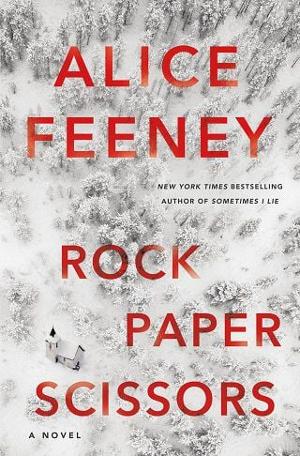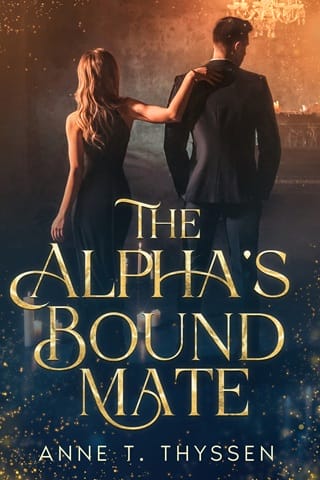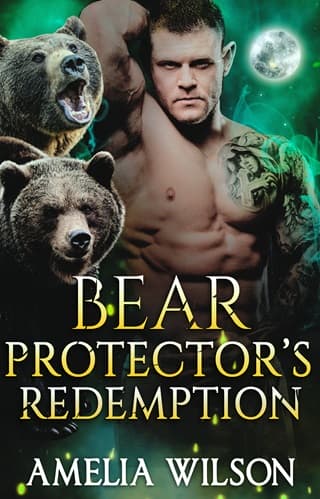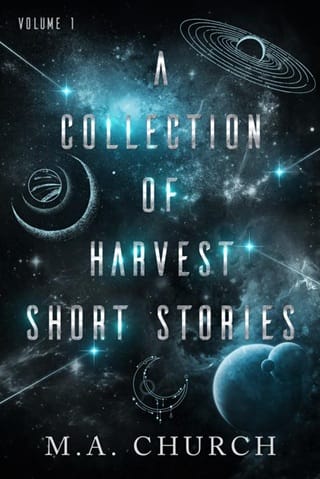Adam
ADAM
“What does this mean?” I ask, holding the tiny drawer full of pennies in one hand and a broken GO AWAY I’M WRITING mug in the other. I may suffer from face blindness and the odd neurological glitch, but there is nothing wrong with my memory (most of the time). The desk is full of anniversary gifts my wife gave me over the years. “Are you in on all this?”
“What? No!” Amelia says.
I stare at her, searching for the truth, but I can’t even see her face. Her features are swirling like a van Gogh painting and I feel dizzy just looking in her direction. Sometimes I can recognize people by the shape or color of their hair, or a distinctive pair of glasses. Sometimes I don’t know if I know them at all.
“Then how do you explain this?” I say, turning back to the desk. “You arranged this little trip to Scotland; you drove us here—”
“I can’t explain anything that has happened this weekend.”
“Can’t or won’t? Did you already know that Henry Winter was dead?”
“I think you need to calm down. I didn’t know anything. I still don’t. Except that…”
“What?” I ask her.
“You said Henry delivered a new book in September, but now we know he died the year before.”
“So?”
“So, what if someone else wrote it?” She shouts the question and I realize that I have been shouting too.
It’s a ridiculous suggestion. The book has since been published all around the world. Does she seriously think that nobody—including his agent, his publishers, and army of fans—would have noticed if someone else had written a Henry Winter novel? But then I do the math and she’s right, it doesn’t add up.
“That isn’t possible,” I reply. The answer in my head is less decisive but I don’t share that one with my wife.
Writers are a strange and unpredictable species. To be one requires patience, determination, sufficient self-motivation to work alone in the dark, and the self-belief to keep going when the shadows try to consume them. And they do try—I should know. The other thing all writers have in common is that they’re kooky at best, crazy at worst. Would Henry fake his own death for some reason?
“We both saw someone let themselves into the chapel earlier. Remember? That’s who we need to blame for all this. Not each other,” Amelia says.
“What about the woman in the cottage?”
“The witch with the candles and the white rabbit? You said she was old…”
“I said she had gray hair. It isn’t as though we’ve seen anyone else since we arrived.”
“So, let’s go back. Knock on her door again. Worst-case scenario, she casts a spell and turns us into white rabbits too,” Amelia replies, sounding calmer than she should.
Maybe because she already knows what is going on here and this is all an act.
I’ll always feel guilty about cheating on my wife, but Saint Amelia slept with someone she shouldn’t have too. It’s as if she conveniently forgets that part of the story. But I can’t. “Call me Pamela,” the counselor, said we needed to move on, learn to put it behind us, but I’m still shocked by how easily my wife lies.
I wish I could see her face now, the way other people can. I wonder if she looks scared? Or does she look as composed as she sounds? And if so—given that we appear to be trapped and quite possibly in danger—why isn’t she as afraid as I am? She seems to have forgotten all about her beloved dog. She’s lying about something, and not knowing what scares me. A haunted marriage is just as terrifying as a haunted house.
“Come with me,” I say, taking her hand—she’s always complaining I don’t hold it often enough.
Her face and voice might not give her away, but Amelia can’t control her breathing. If she’s genuinely stressed or scared, it’s always the first thing to go.
We reach the old wooden spiral staircase leading to the first floor, and I point up at the gallery of black-and-white photos on the wall. It’s been bothering me since we got here.
“Who are the people in these pictures, do you recognize any of their faces?” I ask.
I can tell that the portraits at the bottom of the stairs are of people dressed in Victorian clothes. The ones nearer the top look more recent. I can see that some of the subjects are adults, others are children, but—as usual—I can’t see any of their faces.
Amelia shakes her head, so I start to pull her up the stairs.
“How about now? Anyone here look familiar?”
“You’re scaring me, Adam,” she says, and I can hear from her breathing that she’s telling the truth. I’m about to apologize when she speaks again.
“Hang on, I think this photo is of Henry as a teenager … and the one below looks a bit like him too, but younger, with a man and woman. Parents, perhaps.”
“Some kind of family tree maybe? Keep going,” I say, not letting her go.
“I’m fairly sure most of these pictures are of Henry. I didn’t notice until now, but then I didn’t know what to look for. He’s a lot younger than the face I see on book jackets and in the newspapers—all of which are so out of date.”
Now I drop her hand.
I stare at the photos myself, trying to see what she sees, but it’s pointless.
“Anyone else look familiar?” I ask, when Amelia stops abruptly at the top of the stairs. I notice her twisting the sapphire engagement ring round and round her finger.
“There are some pictures of a little girl too … hold on.”
“What?”
“These pictures weren’t here before. Do you remember? There were just three faded rectangular shapes with rusty nails sticking out of the wall. Someone has put them back.” I’m about to ask if it was her, but bite my tongue. “I think this picture is of—”
I spot something over her shoulder before she finishes her sentence.
“One of the other doors is open,” I interrupt, rushing toward it.
All of the doors on the landing were locked last night, except for the one leading to the bedroom that we slept in, and the one to the bell tower. But now another door is wide open, and I find myself standing inside a child’s bedroom.
Everything is covered in dust like the rest of the chapel, but this room is also full of cobwebs. It smells musty, like it hasn’t been aired for months. Maybe longer. The creepiest thing to catch my eye is the large doll’s house in the middle of the room. It looks antique. It also looks remarkably like our London home—a double-fronted Victorian house. I’m unable to stop myself from opening the dusty doors, and when I see that the rooms inside are decorated in a similar way to our house, I start to feel sick. The same two carved wooden dolls are in every room, but they are not miniature replicas of Amelia and me. One is a doll-sized old man, wearing a tweed jacket and bow tie, the other is a little girl doll, dressed in red. In every make-believe scene they are holding hands, and the old man is always smoking a pipe. When I take a closer look, I see that the pipes are really acorn cups and stalks.
“Have you seen this?” Amelia asks.
She is holding an old jack-in-the-box. I had one exactly like it myself as a child, and it terrified me. I don’t understand the significance at first, until I see that the name Jack has been crossed out, so that now it says Adam-in-the-box instead.
My mother taught me the French name for these things when I was a little boy: diable en boîte, literally “boxed devil.” So many unexpected things remind me of her. And whenever they do, I relive the night she died: the rain, the terrible sound of screeching car brakes, her red kimono flying in the air. The dog was mine. I begged her to let me have one, but then I didn’t look after it. If thirteen-year-old me had walked the dog myself, like I promised to, she wouldn’t have been killed walking along the pavement that night.
My fingers, seemingly independent of my mind, find the crank on the Adam-in-the-box and turn it. Slowly. The nostalgic tune plays and my mother’s voice sings along inside my head.
My mother taught me how to sew,
And how to thread the needle,
Every time my finger slips,
Pop! goes the weasel.
Jack bursts out of the box and I jump, even though I knew what was coming. With its wild red hair, painted face, and spotty blue outfit, it looks terrifying, even more so than the one I remember as a child, because its eyes are missing.
I think I understand the not-so-subtle message, but what else am I not seeing?
As I turn to take in the rest of the bedroom, I notice that the wallpaper, curtains, pillows, and duvet are all covered in faded images of the same thing: robins. Then I see the dusty, freestanding, child’s blackboard in the corner of the room. The chalk words on it have faded, and were clearly written years ago, but I can still make them out:
I must not tell tales.
I must not tell tales.
I must not tell tales.
 Fullepub
Fullepub 



